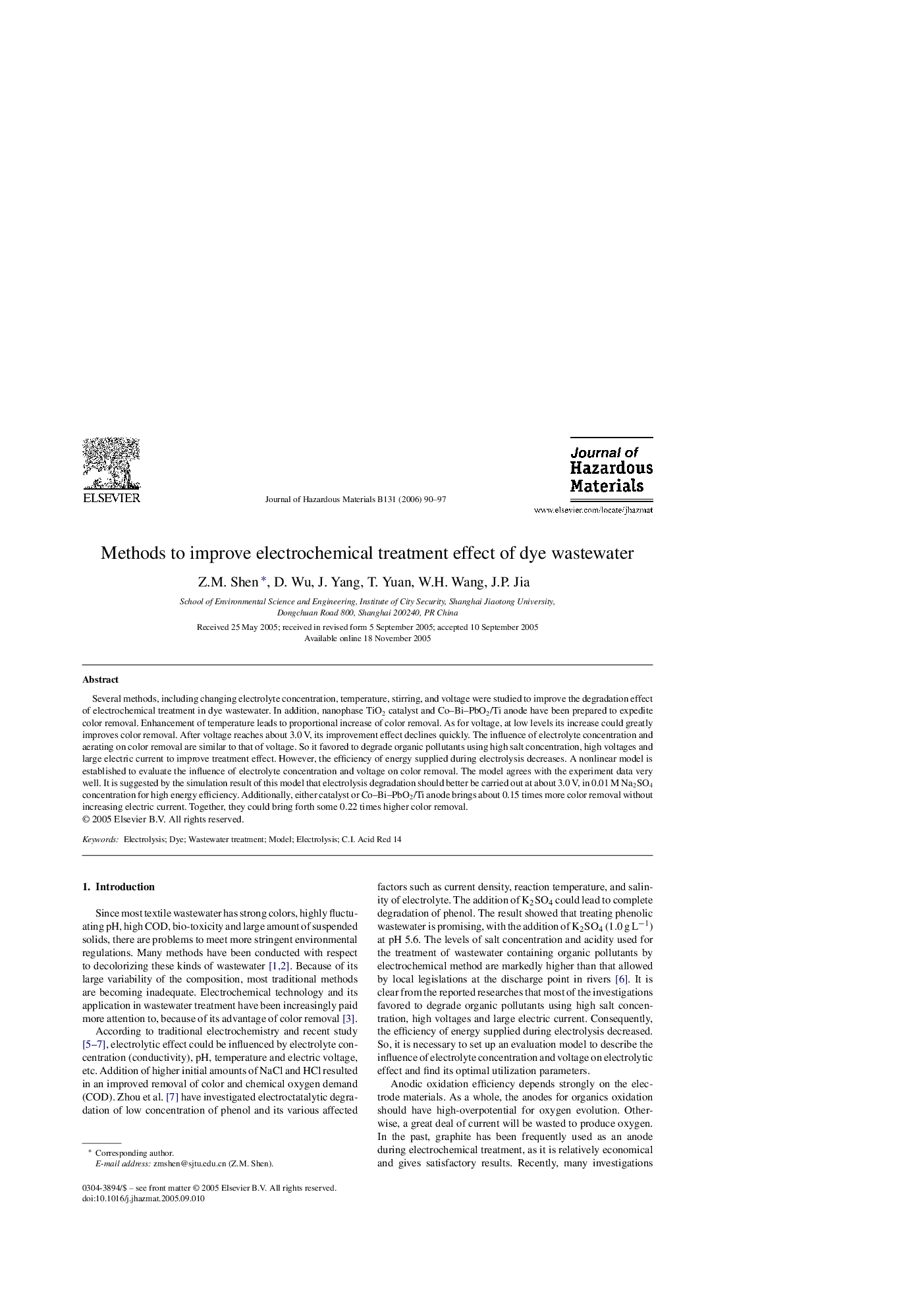| Article ID | Journal | Published Year | Pages | File Type |
|---|---|---|---|---|
| 585832 | Journal of Hazardous Materials | 2006 | 8 Pages |
Several methods, including changing electrolyte concentration, temperature, stirring, and voltage were studied to improve the degradation effect of electrochemical treatment in dye wastewater. In addition, nanophase TiO2 catalyst and Co–Bi–PbO2/Ti anode have been prepared to expedite color removal. Enhancement of temperature leads to proportional increase of color removal. As for voltage, at low levels its increase could greatly improves color removal. After voltage reaches about 3.0 V, its improvement effect declines quickly. The influence of electrolyte concentration and aerating on color removal are similar to that of voltage. So it favored to degrade organic pollutants using high salt concentration, high voltages and large electric current to improve treatment effect. However, the efficiency of energy supplied during electrolysis decreases. A nonlinear model is established to evaluate the influence of electrolyte concentration and voltage on color removal. The model agrees with the experiment data very well. It is suggested by the simulation result of this model that electrolysis degradation should better be carried out at about 3.0 V, in 0.01 M Na2SO4 concentration for high energy efficiency. Additionally, either catalyst or Co–Bi–PbO2/Ti anode brings about 0.15 times more color removal without increasing electric current. Together, they could bring forth some 0.22 times higher color removal.
